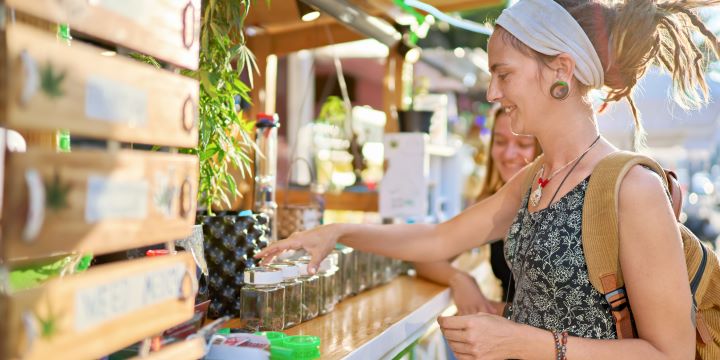In the vibrant landscape of Cherry Hill, New Jersey, the burgeoning cannabis industry is not only reshaping the community’s relationship with the plant but also embracing a commitment to sustainability. As the demand for cannabis products grows, dispensaries are stepping up, implementing eco-friendly practices to minimize their environmental footprint. In this comprehensive exploration, we delve into the world of sustainable cannabis practices, spotlighting dispensaries leading the charge in nurturing a green and environmentally conscious cannabis culture.
The Green Wave: Cannabis Industry’s Environmental Impact
The cannabis industry, like any other, has the potential to leave a significant environmental footprint. From energy-intensive cultivation practices to non-biodegradable packaging, the industry faces challenges that, if addressed, could contribute to environmental degradation. Dispensary in Cherry Hill, NJ, recognizes these challenges and is actively adopting eco-friendly practices to mitigate its impact on the planet.
Cultivation: Sustainable Growth from Seed to Sale
At the heart of the cannabis industry’s environmental impact lies the cultivation process. Local dispensaries increasingly turn to sustainable cultivation methods to ensure their products are potent and grown with a consciousness for the environment.
Organic Cultivation:
As the demand for organic and eco-friendly products increases, dispensaries actively explore and adopt sustainable cultivation practices. They are focusing on using natural methods to grow their crops and avoiding using synthetic pesticides and fertilizers that can cause harm to the soil and the surrounding ecosystems.
Organic cultivation not only produces cleaner cannabis but also promotes soil health and biodiversity.
Energy-Efficient Growing:
Indoor cultivation requires significant energy input. Community dispensaries are adopting energy-efficient technologies, such as LED lighting and intelligent climate control systems, to reduce electricity consumption.
Some dispensaries are also exploring renewable energy sources to power their cultivation facilities.
Water Conservation:
When it comes to growing cannabis, water usage is a vital factor that requires careful attention. To address this, Cherry Hill dispensaries are proactively conserving water by implementing innovative techniques such as drip irrigation systems and water recycling. These efforts will help minimize the water footprint and ensure that cannabis cultivation remains sustainable and eco-friendly.
Packaging: From Seedling to Sustainable Shelf
The environmental impact of cannabis extends beyond cultivation to packaging. The often elaborate and non-biodegradable packaging used in the industry contributes to a significant amount of waste. In response, dispensaries are rethinking their packaging strategies.
Minimalistic Packaging:
Dispensaries are opting for minimalistic packaging designs that reduce material usage and waste.
Biodegradable and compostable packaging options are gaining traction, ensuring that packaging materials break down naturally without harming the environment.
Recycling Initiatives:
Some dispensaries are taking a proactive approach by implementing recycling programs. It includes encouraging customers to return packaging for recycling or providing recycling bins within the dispensary.
Education on Responsible Disposal:
Dispensaries play a role in educating consumers about the responsible disposal of cannabis packaging. It includes providing information on adequately recycling or disposing of materials.
Transportation and Supply Chain: Paving the Green Path
The journey of cannabis products from cultivation to the dispensary shelf involves transportation and supply chain considerations. Local dispensaries are exploring ways to make this process more sustainable.
Local Sourcing:
Many dispensaries adopt a sustainable approach by prioritizing sourcing cannabis products and accessories from local suppliers. Supporting local products not only contributes to the development and prosperity of local communities but also plays a crucial role in reducing greenhouse gas emissions caused by long-distance transportation, promoting a sustainable and eco-friendly lifestyle.
Supporting local growers and producers also fosters a sense of community and sustainability.
Carbon Offsetting:
Some dispensaries are investing in carbon offset programs to neutralize the environmental impact of transportation. It involves funding initiatives that reduce or capture equivalent carbon emissions elsewhere.
Eco-Friendly Packaging for Transportation:
Dispensaries are extending their commitment to eco-friendly packaging beyond the retail shelf. Sustainable packaging for transportation helps minimize the overall carbon footprint of the supply chain.
Community Engagement: Green Initiatives Beyond the Dispensary
Dispensaries are expanding their sustainability efforts to internal operations. They actively engage with the community to promote green initiatives and foster environmental consciousness.
Community Cleanup Events:
Some dispensaries organize community cleanup events, encouraging staff and customers to participate in local initiatives that improve the environment.
It contributes to a cleaner community and strengthens the bond between the dispensary and its customers.
Educational Workshops:
Dispensaries host educational workshops on sustainability, cannabis cultivation, and environmental conservation.
These workshops provide valuable information to the community, empowering individuals to make environmentally conscious choices.
Green Partnerships:
Collaborations with local environmental organizations and businesses allow dispensaries to contribute to broader sustainability efforts.
It might involve supporting reforestation projects, participating in environmental advocacy, or funding initiatives that align with the dispensary’s sustainability goals.
The Road Ahead: Challenges and Opportunities
While local dispensaries are making strides in embracing sustainable practices, challenges remain. Regulatory constraints, limited eco-friendly packaging options, and the energy-intensive nature of indoor cultivation pose hurdles. However, these challenges also present opportunities for innovation and industry-wide collaboration.

